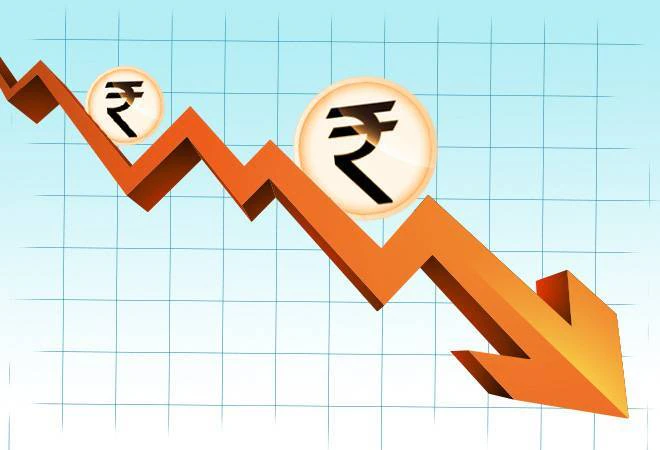Font size:
Print
Rise of Indian Patent Applications
Context:
In FY24, domestic patent applications surpassed foreign ones for the first time, driven by growth in chemicals, pharma, computer science, and IT sectors. However, foreign entities still hold nearly 70% of the patents granted in India.
More in news:
- Foreign patents in India:Patents approved for non-resident Indians and entities stood at 74.46 per cent in 2022, which is among the highest in any major economy globally.
- The World Intellectual Property Organization (WIPO) data showed that the comparable number in the case of China stood at 12.87 per cent..
- Domestic patent applications, however, have been steadily increasing since FY19, bridging the wide gap between domestic and foreign applicants.
- The patent application of residents in the total request to the patent office rose from 34 per cent in FY19 to 53 per cent in FY24, as per data released by the Office of the CGPDTM.

Implications :
- Trade policy experts highlight a gap between domestic and foreign patent holders, indicating inefficiencies in India’s R&D, exploited by foreign companies.
- Economists cite weak private investment and stagnant government spending as reasons for low R&D activity, leading to dependence on imported machinery and foreign technicians for exports.
- WIPO data shows countries with high R&D spending have lower foreign patent approvals: Japan (22.98%) and Korea (26.61%).
- Japanese and Korean products dominate the Indian smartphone and automobile markets.
- The rise in foreign patents in India is driven by the Patent Cooperation Treaty (PCT) and the Paris Convention, with 90% of foreign patents filed through these.
- India joined the PCT in 1998, which now includes 142 member countries, facilitating multinational patent filings.

Significance of rise in India’s patent approval:
- Patent approvals, an indicator of research and development (R&D) activity by companies and firms,
- though it continues to be skewed in favour of foreign entities with global IT majors such as Qualcomm Inc., Samsung Electronic.
- Greater foreign investment and exports For ex- COVISHIELD and COVAXIN in vaccine technology.
- Social benefits– Patents play a pivotal role in solving the contemporary social issues of climate change, poverty, hunger.
Patent Regime in India –
- In India, patents are governed by the Patents Act, 1970.Under the act, patents are granted if the invention fulfils the following criteria:
- It should be novel;
- It should have inventive step/s, or it must be non-obvious;
- It should be capable of industrial application
- Indian Patent Act of 1970 was amended to align with the Trade-Related Aspects of Intellectual Property Rights (TRIPS) Agreement of WTO.
- The Amended Indian Patent Act of 2005, introduced patents for pharmaceutical products.
Challenges in India’s IPR regime:
- India’s spending on research and development as a percentage of GDP has stagnated over the years. R&D spending is around 0.64 percent of GDP.This is much lower than the global average of 2.62 per cent.
- lower R&D spending is also a reflection of the weaker private investment climate in the country.
- Low R&D intensity affects industrial growth and increases dependence on Chinese imports.
- Foreign firms cornering a big chunk of patents would not only increase India’s tech dependence but also increase foreign exchange outgo.
- Compulsory licensing allows the government to permit entities to use, manufacture, import, or sell a patented invention without the patent owner’s consent. Concerns over misuse have hindered patent development in India.
- For example, India issued a compulsory licence for Bayer’s Naxavar, a crucial drug for kidney and liver cancer.
- Evergreening of patents is a strategy to extend a patent’s term to retain royalties by obtaining new patents. Section 3(d) of the Indian Patent Act 1970 prevents evergreening.
- This has been a concern in the pharma industry, as seen in the Novartis vs. Union of India case, where Novartis was denied a patent for evergreening.
-
- Public Health vs. Patent Protection
- Enforcement Issues:Despite TRIPS compliance, India has faced criticism regarding the enforcement of IPR, with concerns about piracy and counterfeiting remaining significant.
- Balancing Innovation and Access
Way Forward
- Government Initiatives: The government has introduced schemes like the semiconductor manufacturing incentive to encourage IP creation by Indian firms.
- Mashelkar Committee (2005)Recommendations:Amend the Indian Patent Act to comply with the TRIPS Agreement while safeguarding public health.
- A parliamentary committee,presented a comprehensive report on ‘Review of the Intellectual Property Rights Regime in India’ recommended
-
- Need for studies regarding economic impact of IPRs on India’s GDP
-
- Innovation and Creativity
-
- State Government involvement in formulating IPR policy
-
- Studying the role of IPR in attracting FDI to countries
-
- IPR Awareness among MSMEs and small businesses
- Reconsider abolition of Intellectual Property Appellate Board(IPAB) in wake of its pivotal role in the adjudication of IPR appeals and cases.
- National IPR Policy (2016) recommendations
-
- Intellectual Property Rights Policy Management (IPRPM) Framework: National IPR Policy 2016 encompasses all IPRs into a single vision document, setting in place an institutional mechanism for implementation, monitoring and review of IP laws.
- Financial support for less empowered groups such as farmers, weavers, artisans, craftsmen, etc., through rural banks or cooperative banks, should be a priority.
- Traditional knowledge: The policy recommends extending the Traditional Knowledge Digital Library’s (TKDL) scope and expanding it to encompass disciplines other than Ayurveda, Yoga, Unani, and Siddha.


